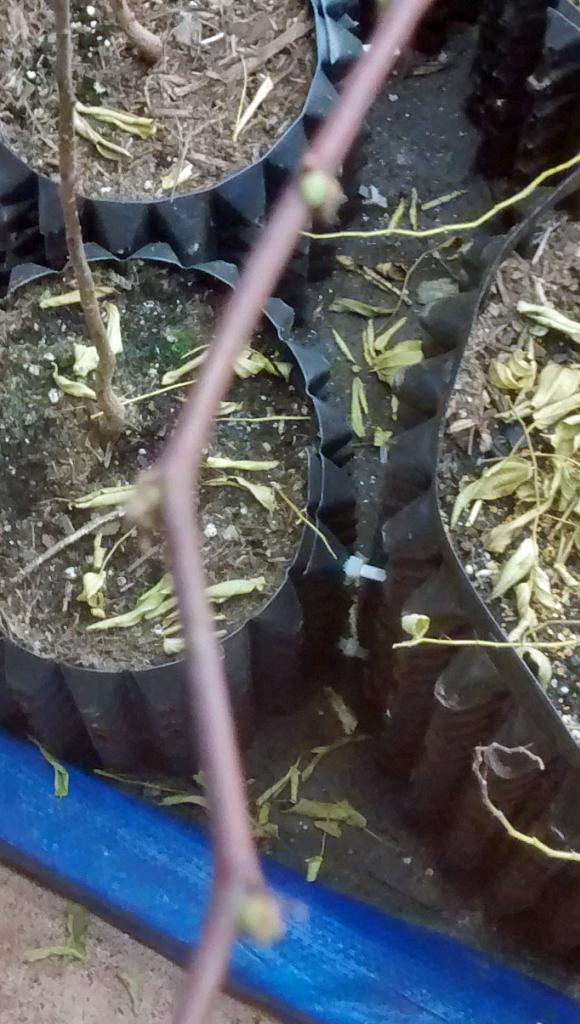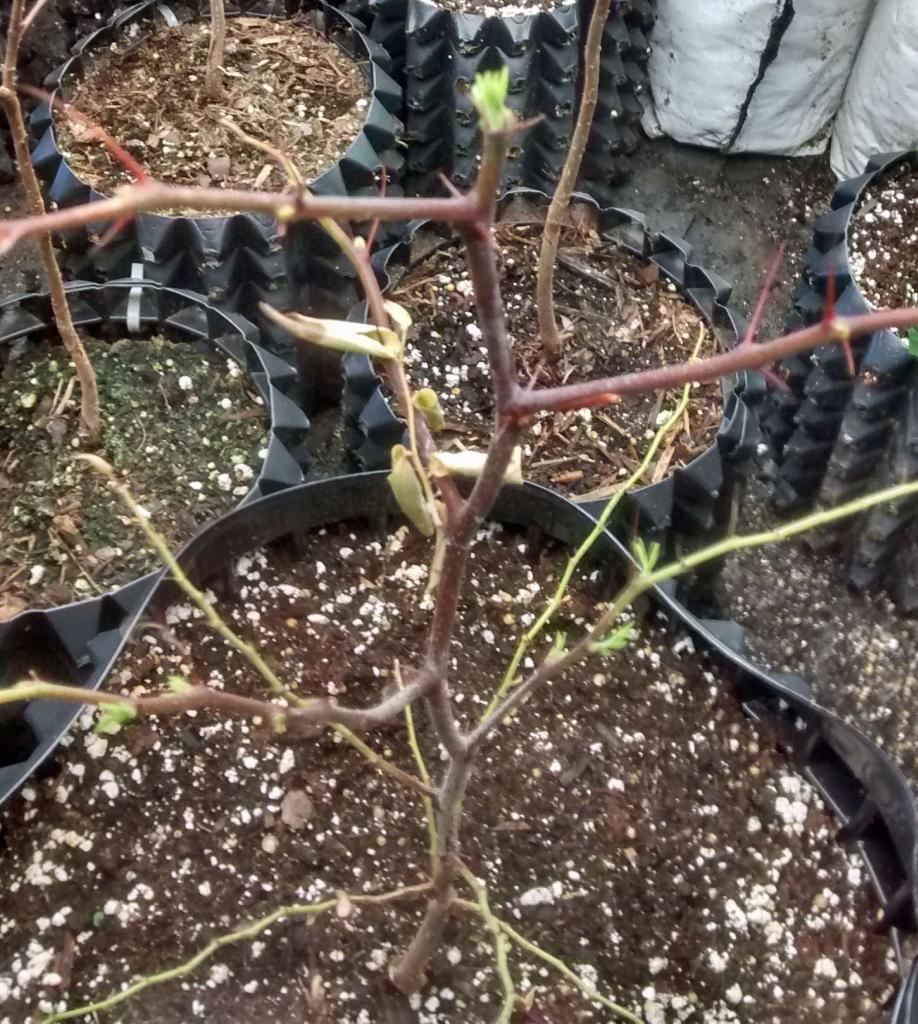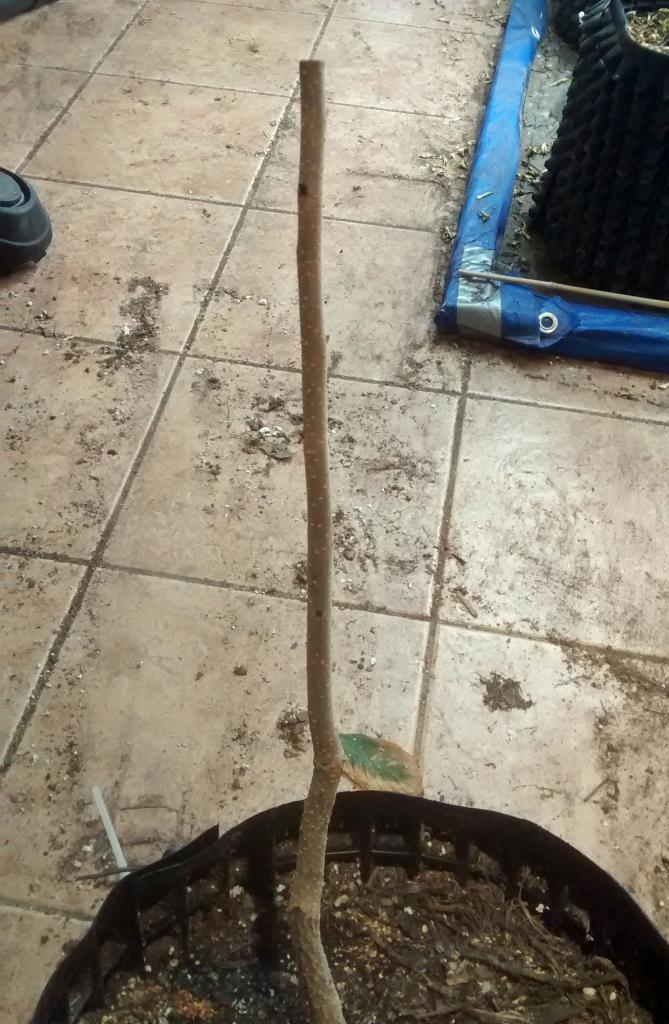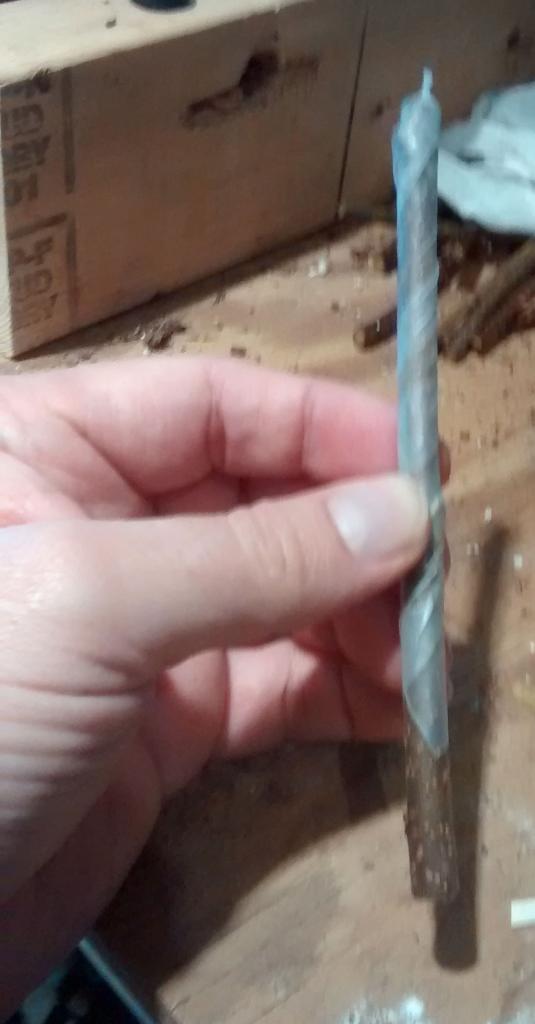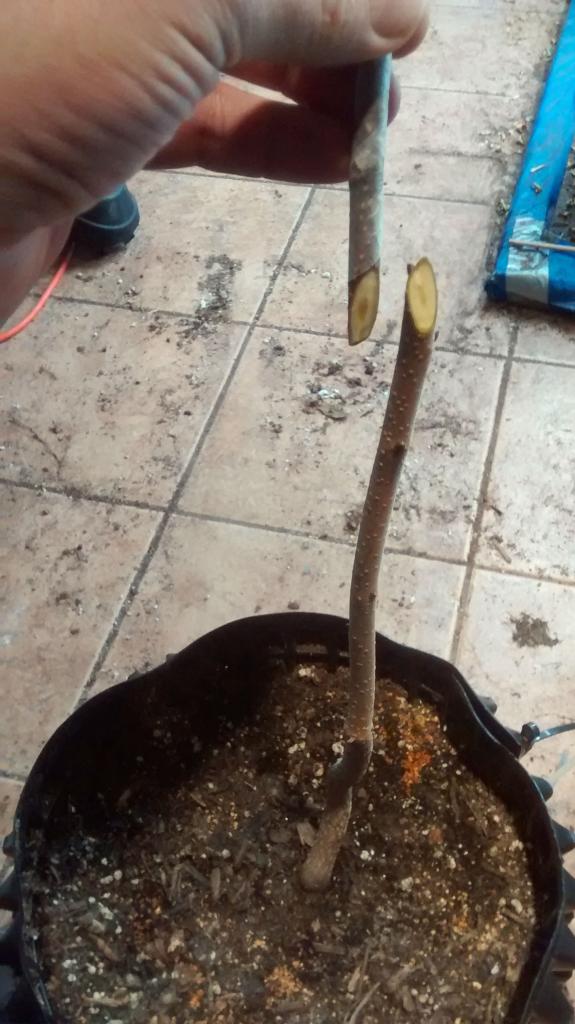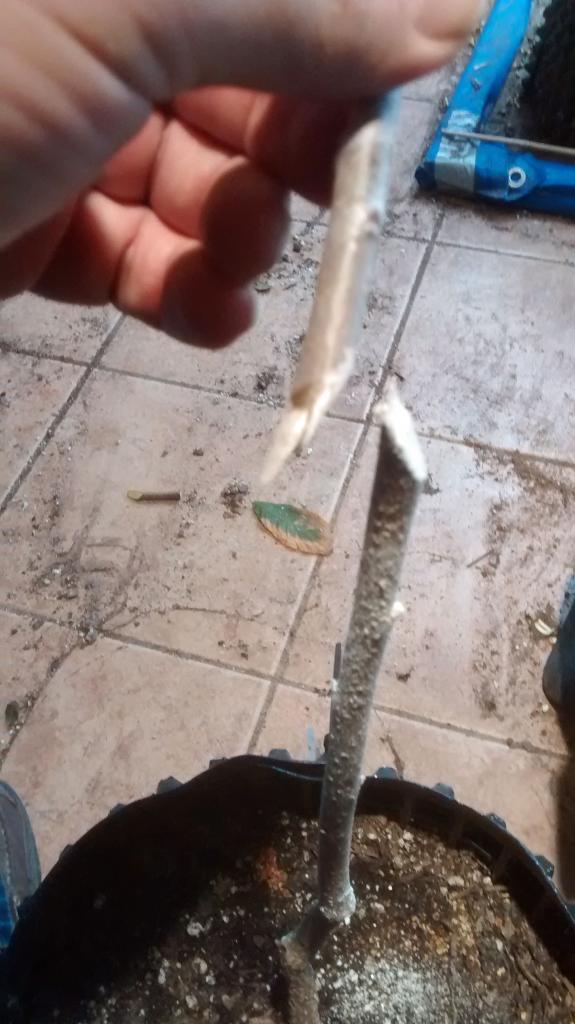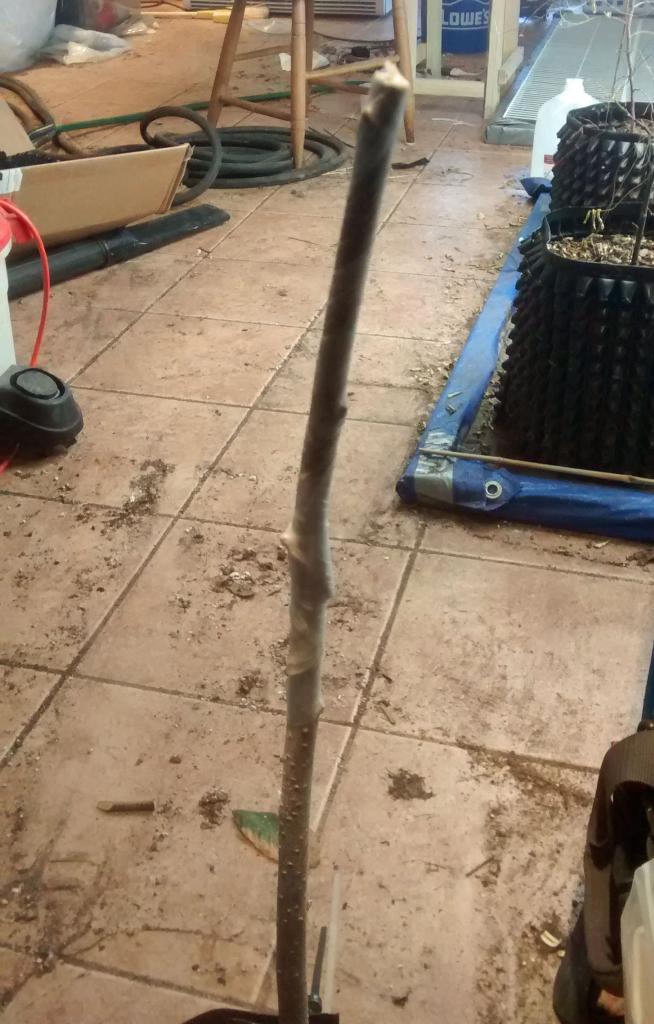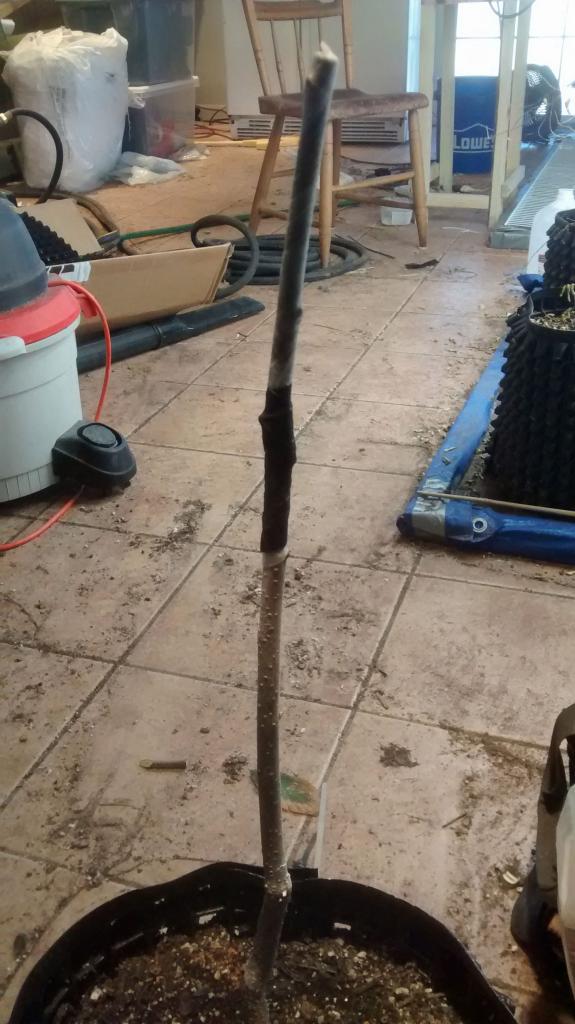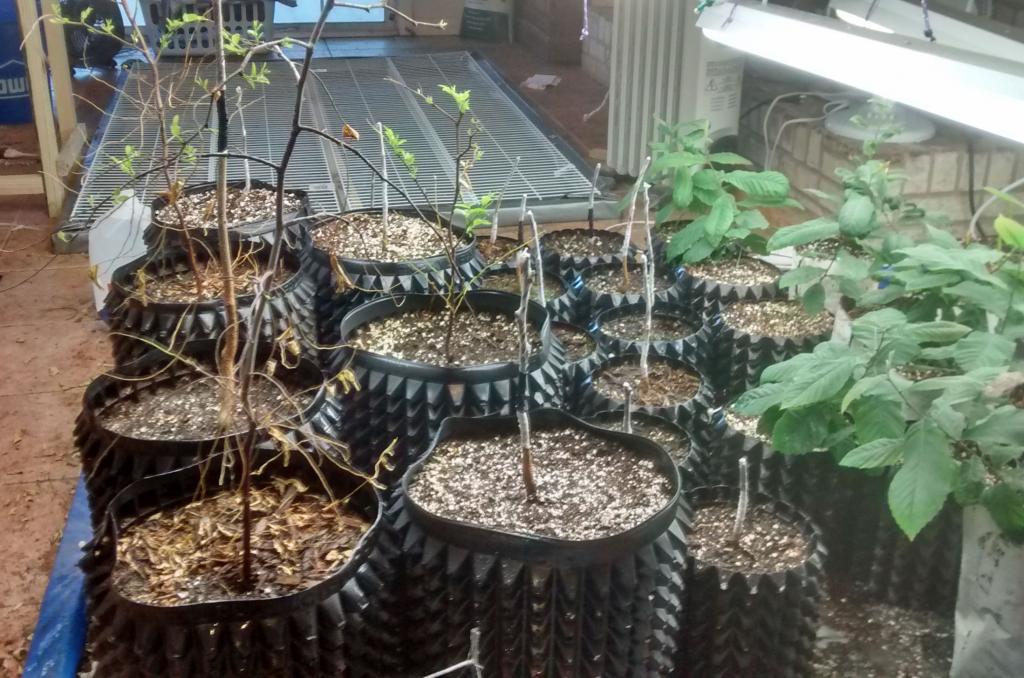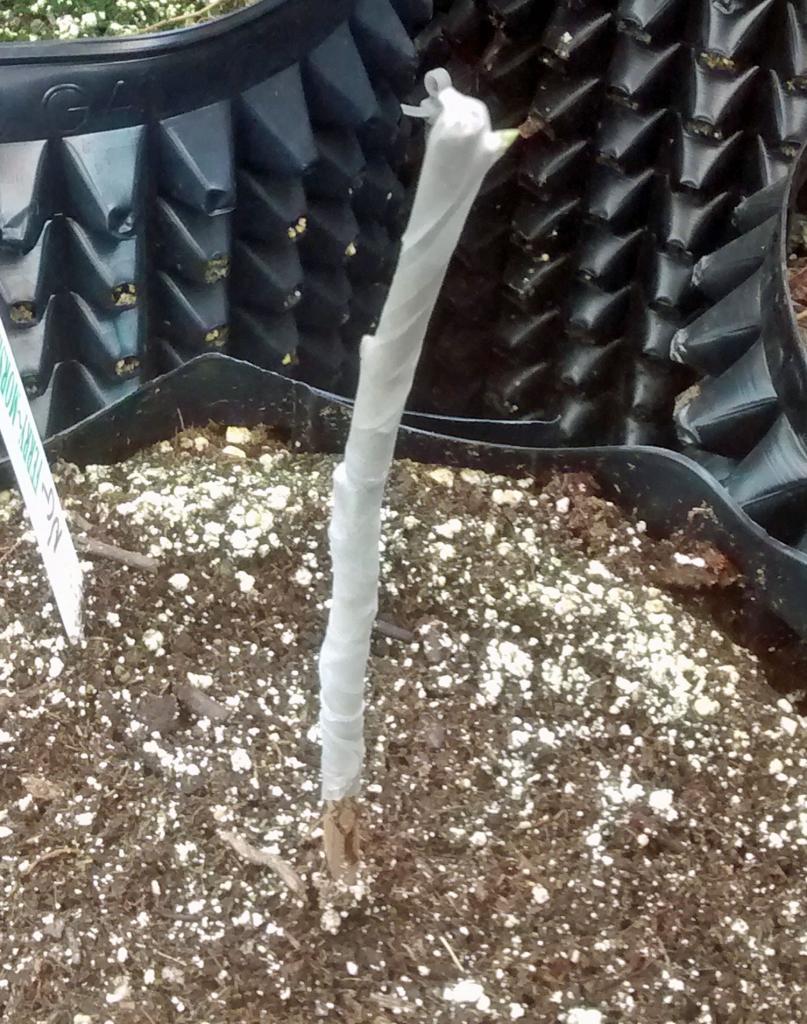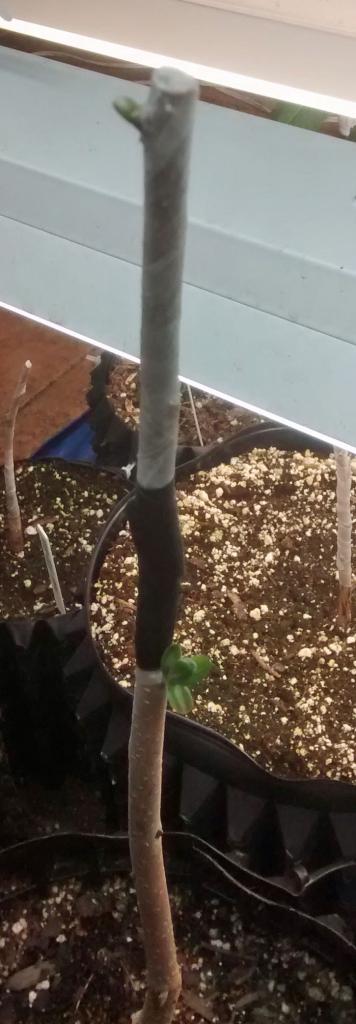Lot2Learn;753724 said:
Jack, how old is that persimmon seedling that you're using as rootstock?
It is kind of odd. It is about 1 1/2 growing seasons old. I started persimmons from seed in RM 18s on my deck during the summer. Late in the summer I transplanted them to 1 gal RBIIs. I was foolish and did not mulch them in that winter.
In the middle of the winter I brought them in and warmed them up and tried grafting some of them (you can see this in the beginning of the thread). They were al too small to graft, but I wanted the experience of bench grafting. I used wedge grafts on most of them. They all failed. At the time, I thought it was the fact that they were so young that they had not properly hardened. That may have been part of the problem The thing I did not realize at the time is that there were probably hurt most by the roots freezing.
Some of the trees that I did not graft died but some survived and eventually leafed out. Of those that had the top growth die, some produced new growth from the root system in the 1 gal pots.
This past spring I took one of the trees that survived and transplanted it into a 3 gal RBII. (I thought it was a high 5 at first which is what I ordered, but subsequent I found they sent me the wrong thing and it is actually a 3 gal). Because the root system was not constrained, it grew much faster than the others that survived in 1 gal RBIIs.
The tall tree that you see pictured in the grafting demonstration above was this tree. It is about 1 1/2 season old where 1 full season was in a 3 gal RBII. The diameter is about the size of my index finger at the base. I had to go quite high up in the taper to match the scion size.
The tree you see in the picture with the green bud is one that survived but grew in a 1 gal RB II. I transplanted that one into a 3 gal RB II just a week before I grafted it. It is about pencil size in diameter.
Here are my conclusion so far:
1) You must keep roots from freezing when overwintering RM trees in some way.
2) If you start persimmons outdoors, they will probably be too small to graft until they are 2 seasons old because that first growing season is so short.
3) If you start your seeds under lights in doors and transplant into 1 gal RBIIs at 12-16 weeks, I think the trees will be standard bench grafting size (about a pencil in diameter) after the first growing season.
4) In my area (zone 7A) you can bring persimmons indoors between Christmas an New Year and warm them up as they will have had sufficient chill hours.
5) I would probably let them warm up for about a month or so before grafting. It can take over 2 months for them to leaf out (it is based on head hours).
I'll stop there with conclusions. I'm also grafting some trees that are much smaller in diameter than recommended. I want to see how small you can go with grafting them. I plan to keep some of them for another season after transplanting them to 3 gal RBIIs. Some others, I'm going to try to plan in the field directly from the 1 gal RBIIs this spring given the grafts take. I want to see if that extra season in 3 gal pots is worth the effort.
Long answer to short question....
Jack
